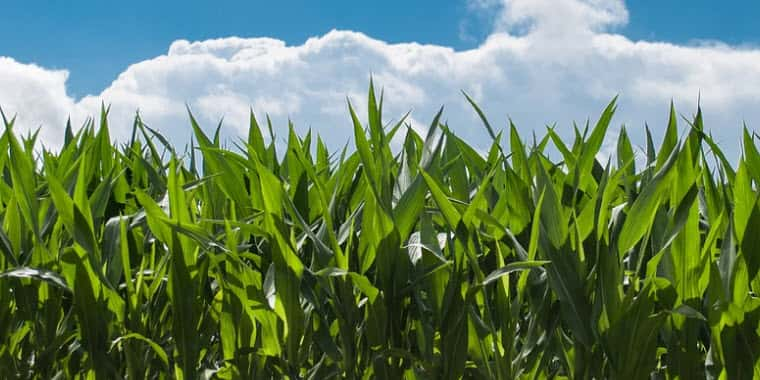The 2023 June Acreage report from the National Agricultural Statistics Service (NASS) was a double shocker, with soybean acres sharply lower than trade expectations and corn acres sharply higher. Following the release of the USDA report, November soybean futures soared on planted acres that were 4 million below the March intentions, meanwhile corn futures tumbled lower an acreage that was 2 million below USDA’s earlier prediction.
The average trade estimate for 2023 planted corn acres by Dow Jones was 91.8 million acres — down less than 200 million from the March intentions. Instead, corn planting rose to a much greater-than-expected 94.1 million acres — 2.1 million acres higher than March. Some notable state changes were Texas up 22%, Louisiana up 14%, Illinois up 4.5%, North Dakota up nearly 7% and South Dakota up just over 5%.
December corn, which was trading up 4 cents prior to the report release, plunged to a loss of 33 3/4 cents at the close, at $4.94 3/4.
USDA’s estimate puts 2023 corn acres up 6% from last year. It’s the third highest corn planting since 1944 and the most since 2013. Harvested acreage, at 86.3 million acres, is also higher than last year.
Soybeans had the exact opposite situation with planted acres far below expectations. Planted acreage was reported to be just 83.5 million acres — more than 4 million acres below both the March estimate and last year’s final planted acres. Traders were looking for 87.66 million acres. The net effect of this change could be to cut production by as much as 200 mb. Some notable changes were Wisconsin, down almost 9%, Illinois down 7.4%, Missouri close to 7%, and North Dakota down a whopping 13.7%.
Prior to the report, November beans were trading 25 to 26 cents higher, so some expected a bullish number. However, I don’t think there was anyone who thought that soy planting would be down this much. November beans rose close to 85 cents at the high point and finished with a daily gain of 77 1/2 cents per bushel, closing at $13.43 1/4.
Wheat had some surprises of its own, but not to the level of corn and soybeans. Total wheat acres, at 49.6 million, were almost right on with the estimate, and down nearly 255,000 acres from March intentions, but 3.86 million acres more than in 2022. Winter wheat acres were 3.7 million and 300,000 less than traders had expected, with spring wheat at 11.1 million, just over 600,000 acres more than the average trade estimate. North Dakota increased spring wheat planting by 400,000 acres. On a by-class breakdown, hard red winter figured 25.7 million acres, soft red was 7.66 million, while white winter wheat was 3.68 million.
Wheat futures had a mixed reaction, with Kansas City September finishing 27 cents lower than the high at unchanged, while both Chicago and Minneapolis wheat finished with losses of 16 1/2 and 12 cents, respectively, no doubt seeing some of that weakness spillover from corn.
The impact of December corn falling to its lowest level since October of 2021, had a significant impact on cattle futures. Feeder cattle were trading lower ahead of the report, but quickly jumped up by $3-$5 to finish at new contract highs, with the support spilling over to the live cattle as well.
There’s been no shortage of volatility across the grain and livestock futures in the last month. Drought concerns in the cornbelt in mid-June caused corn futures to start rising and feeder cattle fell $15 in about two weeks. However, since June 21, new crop corn has fallen $1.32/bu and in the last 7 trading sessions August feeders have gained back an impressive $20/cwt.
###
DTN/Northern Ag Network


